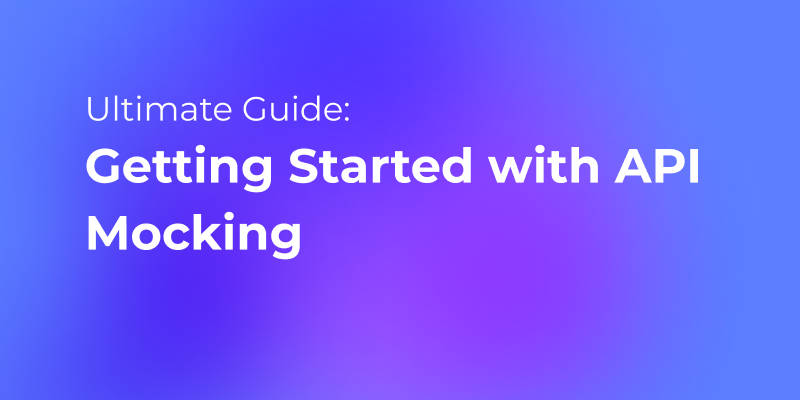How to Mock an API for Testing
Master the art of mock API creation for seamless testing workflows. This guide covers API types, best practices, and a step-by-step setup using Apidog.
In the realm of software development, mastering the art of mocking an API for testing is a crucial skill. Creating a mock API for testing is a valuable process that allows developers to simulate the behavior of a real API for efficient and controlled testing.

This guide will provide you with practical insights and a step-by-step guide on effectively creating mock APIs, offering a valuable resource for developers aiming to enhance their testing processes.
Types of Mock APIs
Before delving into the creation of a mock API, understanding the suitable type for your project is paramount. Each type presents unique advantages and considerations, requiring thoughtful selection based on your project's realistic expectations.
Internal vs. External APIs:
An essential distinction emerges when deciding whether the mock API replicates an external dependent API or an internal one. The dynamic nature of internal APIs, especially during development, necessitates frequent updates to mock servers.
Leveraging tools like the OpenAPI Specification becomes crucial for keeping pace with changes. For external APIs, periodic data gathering ensures a more accurate reflection of alterations, given the absence of direct access to API definitions.
Public Mock API vs. Local Server:
The decision between a mock API residing on public servers or localized on your machine hinges on specific project requirements. Public accessibility facilitates seamless integration with external services, while local servers offer advantages in scenarios demanding low latency or offline access. This nuanced choice caters to the unique needs of your project and testing environment.
Static vs. Dynamic Mock Data:
In its most straightforward form, a mock API may opt for static example responses, simplifying the generation process. However, the drawback lies in potential deviations from the variability seen in real APIs, introducing a degree of abstraction.
On the contrary, dynamic responses inject realism by incorporating random data generation tailored to field types and defined requirements. This adaptability proves invaluable, offering a more authentic simulation of diverse testing scenarios.
Mock an API for Testing without a Mock Server
Apidog simplifies the process of mocking an API for testing by eliminating the need for a separate mock server. With built-in mocking capabilities, Apidog enables developers to generate realistic mock data effortlessly, streamlining the testing process directly within its user-friendly interface.
This integrated approach enhances efficiency and expedites the testing phase, making Apidog a versatile tool for API development and testing workflows.

How to Mock an API for Testing
Below is a step-by-step guide on how to mock an API for testing:
Step 1: Import API Definitions
Before mocking API, you may prepare for the API documentation, like Swagger or other format files. If not ready for it, Apidog is an effective way to document a beautiful API.
Create a new project in Apidog. Go to Settings>Data Management > Import Data, select the desired API documentation formats, and drag your API file in. Click "Next" and your API will be imported.


Step 2: Enable the Mock Cloud Server
Go to Settings>Feature Settings > Mock Settings, find Cloud Mock and turn on the switch. For added security, you have the option to set up a token, ensuring users can only access the cloud with a valid token.

Step 3: Get the Mock URL
Click on one of the endpoint documentation at Apidog. Find Mock sections where you can see a list of Mock URLs. Select a desired one and copy the URL.

Paste it into a browser. And you can see the API mock data like this:

Apidog simplifies the process of generating mock data for API development effortlessly. It utilizes built-in mocking rules to automatically mock data based on field names according to API definitions.
Additionally, Apidog initiates a mock server on your local machine without the need for server-layer configuration. Users have the flexibility to customize the mock data by customizing mock rules using Faker.js grammar.

Conclusion
Mastering mock API creation can significantly enhance the efficiency and reliability of your software development process. By choosing the right type of mock API—be it static, dynamic, local, or cloud-based—you can streamline testing workflows, reduce dependencies, and improve collaboration across teams.
Apidog, with its integrated mocking features, makes this process smoother, offering a robust platform for generating realistic mock data without complex setup. This enables developers to simulate real-world scenarios and refine their applications with ease, leading to faster, more efficient releases.




